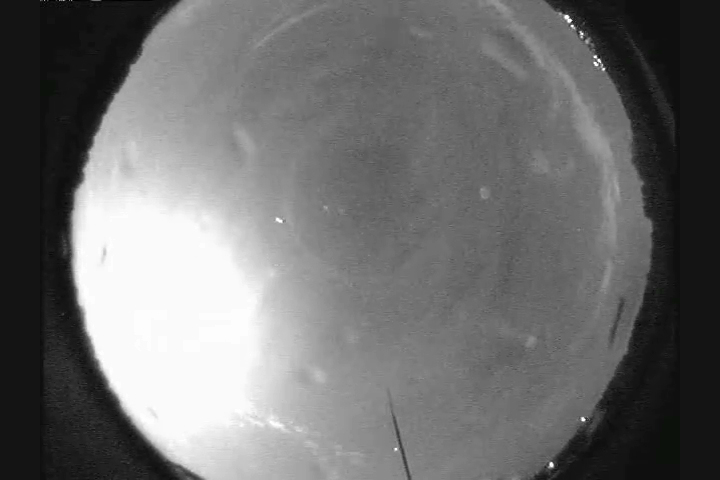A 'Fireball' 40 Times Brighter Than the Moon Shoots Across Alabama Skies
This past weekend, a fiery meteor about 40 times brighter than the full moon streamed across the skies over Alabama during the early hours of Friday (Aug. 17).
The event took place at 12:19 a.m. local time, according to NASA Meteor Watch, which captured video of the event and shared the footage to Facebook, dubbing the meteor the "Alabama Fireball."
Six NASA cameras in the region captured the blazing object — a small asteroid measuring approximately 6 feet (2 meters) in diameter, a NASA representative wrote in the Facebook post. The fireball was big enough and bright enough to be easily seen by the naked eye, even through clouds, and it triggered "every camera and sensor operated by the Meteoroid Environment Office in the region," according to NASA. [Space-y Tales: The 5 Strangest Meteorites]

The meteor was first spotted at an altitude of 58 miles (93 kilometers) above Turkeytown, Alabama. From there, it burned a fiery trail in the sky as it headed west at an estimated 53,700 mph (86,422 km/h), disintegrating about 18 miles (29 km) over Grove Oak, Alabama, NASA reported.
"We are still assessing the probability of the fireball producing meteorites on the ground," a representative wrote in the post.
Earth is constantly bombarded by natural space debris — thousands of rocky fragments enter the atmosphere each year — but 90 to 95 percent of the objects disintegrate before ever reaching the planet's surface, Space.com reported.
Recently, the Perseid meteor shower, an annual event visible in the Northern Hemisphere during the month of August, delivered its own spectacular light show, producing as many as 60 to 70 "shooting stars" per hour from Aug. 11 to Aug. 13.
Get the Space.com Newsletter
Breaking space news, the latest updates on rocket launches, skywatching events and more!
Friday's meteor exploded harmlessly during its blazing descent over Alabama, but the state is also known as the site of a much more harrowing (and rare) close encounter with an object from space. On Nov. 30, 1954, a chunk of meteorite plummeted through the roof of a house in Sylacuaga and struck a woman named Ann Elizabeth Fowler Hodges who was napping on her couch, leaving a sizable bruise, according to NASA.
Original article on Live Science.
Join our Space Forums to keep talking space on the latest missions, night sky and more! And if you have a news tip, correction or comment, let us know at: community@space.com.











